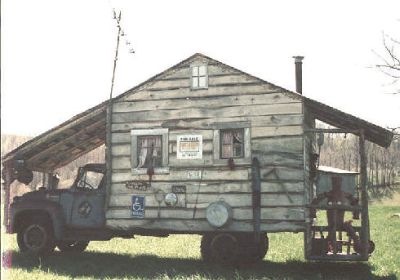Drawers, from scratch to systems
Materials and methods forum participants are employing in their quest for the perfect drawer. February 14, 2001
Question
What materials are you making your drawers out of? What methods of assembly are you using?
Forum Responses
I make mine out of 3/4" maple and I dovetail everything. I offer a lot of options with my cabinets, but not drawers.
I have made mine out of solid wood, plywood, veneered MDF and melamine, all doweled and glued, under mount drawer guides and sized to fit the application at hand.
I have switched to MetaBox. It is not necessarily any better for the end user, but it is easier for me. It would be better than stapled drawers.
Cut a back and bottom, drill some holes and package for shipment. I assemble them on the job site, no handling during cabinet installation. The front snaps on. The only tool required is a screwdriver.
It takes about two minutes to assemble and apply in the hole. Applying the front fixing brackets and installation takes another 2 minutes.
We use 5/8 melamine for the front/side/back and 3/8 melamine for the bottom, set into a dado and glued and attached with 1 1/4 nails. The box is assembled with lamellos. We use Accuride full extension slides, which will soon be available with a self closing feature.
We use the Grass Zargen metal drawer. All I need is to drill the drawer front, cut and groove a bottom (on an ordinary saw and saw blade) and cut a back. It is then pressed with a pneumatic ram. Occasionally a screwdriver is used to adjust the drawer front.
I make my drawers from 5/8" poplar with 1/4" plywood bottoms set in a dado. I use a blind dovetail to put the boxes together. I also use 100 lb full extension slides. While this takes longer, it makes a quality drawer. It has been the selling factor in many jobs.
I recently saw a job where the Grass Zargen system was used. I noticed that the dowels were pulling out of the drawer fronts, which were 3/4" laminated particleboard.
Was there something the commercial cabinetmakers did wrong that could have made this happen, or is this just something that happens in high use commercial applications?
I have repaired a lot of drawers where the nylon dowel came out of the drawer face. When someone repeatedly gives a good yank on the drawer, with the weight of heavy items inside, it won't stand up. A solid box, melamine, plywood or solid wood, with an additional drawer face, using Blum's drawer face levelers and the handle screw going through both pieces of wood, is by far the strongest way to make a drawer. The metabox or Zargen system was designed for the mass-produced market with kitchens that have no real warrantees attached.
I'd guess there is a problem with the hole the dowels were inserted into. Most likely the hole is slightly oversized, which could be caused by a variety of factors. We have used dowel-inserted hardware for over 15 years and I have not had a dowel pulled loose yet. If the hole is the proper size, you'd be more likely to pull the screw out of the dowel.
The only drawers that go in one of our cabinets are Zargen. Each cabinet is custom made to order. I've yet to replace either a Metabox or Zargen drawer.
Brian Personett, forum technical advisor
These dowels may pull out because they don't expand.
I imagine someone just couldn't help but install bumpers on the drawer fronts. If the slides are set back, the drawer front becomes the stop.
This would effectively override the stops built into the slides. The dowels are barbed, so the grip is assisted by the screw, although it is not a true drop-in-and-expand type dowel.
This is designed to be installed with a press, or at least a handheld driver. This installs the hardware without alternating sides, which "wallers" the holes.
The comments below were added after this Forum discussion was archived as a Knowledge Base article (add your comment).
Comment from contributor A:
On those Zargen jobs that fronts came loose, check to see if fabricator/installer put door bumpers on drawer front. Zargen drawer fronts never hit the cabinet if installed properly because of front stops on cabinet members, however if bumpers are installed on the drawer front they have defeated the purpose of the stops on the cabinet members and fronts are taking the impact instead of drawer member hitting cabinet member.
Comment from contributor B:
I use full extension slides and have the drawer front overlap the slides and the case sides. I attach the drawer slides to the front by a simple dado groove into which I insert the case side. No dovetails and no lock joints. The key to success is a precise, slight push required fit of the drawer side into the drawer front dado groove.
